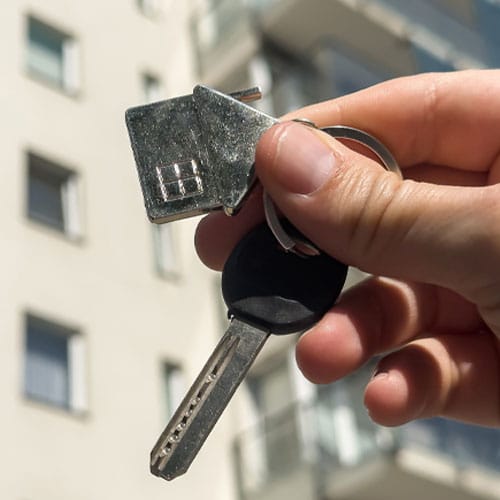
Multi-Property Landlord Insurance
Compare Multi-Property Landlord Insurance Quotes
- Complete one short form
- Quickly compare quotes
- Find a great deal today!

Compare multi-property insurance quotes from UK’s leading landlord insurers including:
Why Compare Multi-Property Landlord Cover At SimplyQuote.co.uk
Anyone who has ever tried managing the various needs of multiple residential and commercial properties themselves will know that it’s no walk in the park.
This is especially true in instances where properties are spread throughout the country – which can cause the property owner to be constantly swept off their feet as they travel up and down the UK, putting out fires (figuratively, at least we hope).
Let SimplyQuote, through its partnership with Quotezone, simplify the process of comparing multiple insurance quotes for the properties you own, rent, and manage. In just a few clicks, you can explore options to cover all your properties under one policy with a single renewal date. Simple.
What Do You Need To Get A Quote?
You’ll need to provide the following information to access a range of multiple property landlord insurance quotes:
- Personal details
- Property portfolio details – how many properties do you own/rent?
- Structural details – what materials are your properties constructed from?
- Location of your properties
- Claims history details
- Policy details
Why Do You Need Multi-Property Landlord Insurance ?
If you’re a landlord managing and renting more than one property in the UK, you need multiple property landlord insurance.
Multi-property landlord insurance is a specific type of landlord insurance for owners of one or more privately rented properties; for both residential and commercial properties.
Whether you own a single-rented property or an entire block of flats, multi-property landlord insurance policies come in all shapes and sizes to suit your needs.

What Are The Benefits Of A Multi-Property Landlord Insurance Policy?
There are many advantages of a multiple property landlord insurance policy, from peace of mind to cost savings.
Let’s take a closer look:
Peace of mind
Know all your rental premises are covered with quality insurance and you’re protected from any legal disputes made against you by tenants or third-party persons.
Convenience
Having all your properties on one policy with one renewal date reduces the amount of admin fees and paperwork.
Flexibility
Add or remove properties as your portfolio grows.
Cost-effective
It’s often cheaper to bundle many properties together as opposed to single policies.
What Does Multi-Property Landlord Insurance Cover?
This type of insurance covers the cost of rebuilding/repairing properties in the event of a covered disaster (a.k.a an “insured event”.) It offers comprehensive cover to protect your property from a range of events such as:
- Fire
- Flooding
- Subsidence and heave
- Vandalism
- Theft (including attempted burglary)
- Storm damage
Landlord insurance for multiple properties covers:
Buildings insurance
Landlord building insurance protects the physical structure (and permanent fittings and fixtures) of your rental properties from any property damage, be it malicious or accidental.
Repairing structural damage to a property is never cheap and can often mount up as further problems are detected throughout the job.
By choosing to opt for buildings insurance, landlords can make sure that whatever happens, they are fully covered.
Contents insurance
Landlord contents insurance protects the contents within the property you own and saves you money when these items are damaged or broken and need replacing. Contents insurance only applies to the property owner’s (i.e. the landlord) goods that they allow tenants to use. These items may include:
- Furniture – sofas, beds, tables and chairs
- Electronics – TVs, stereos and smart home devices
- Furnishings – carpets, rugs and curtains
- Equipment – barbeques, microwaves, kettles and ovens
- Kitchen utensils – crockery, cutlery and glassware
Liability insurance
Liability insurance aims to protect landlords against unforeseeable circumstances in which they are held liable by the tenant or a person of the general public.
Instances where liability insurance may prove essential vary massively but can include issues such as:
- Tenants injure themselves within a property (including illness and death)
- Tenant’s guests sustain injuries (e.g. if they trip and fall over a wobbly step)
- Third-party persons are injured (e.g. say the neighbour is walking their dog and falls over uneven paving at your rental property)
Rent guarantee cover, income protection and legal expenses insurance may or may not form part of standard landlord insurance policies as this depends on the individual insurer. Ultimately, if they are not covered, landlords can add these as optional extras – which we’ll cover in a minute.
What’s not covered by multiple property insurance for landlords?
- General wear and tear (often associated with poor maintenance upkeep)
- Pet damage
- Tenants personal belongings
- Uninsured structures/items/appliances not mentioned in the original policy
- Malicious damage caused by the landlord (to claim insurance pay outs)
- Unoccupied properties (standing empty for longer than 60+ days)
- Incorrect property usage (e.g. commercial buildings used as residential properties and vice versa)
What kind of properties does multi-property insurance cover?
- Commercial and residential properties
How many properties can you insure under one policy?
- Up to 15 different properties
What Are The Types Of Multi-Property Landlord Insurance?
While there are two main property types, landlord insurance is not specifically geared toward individual builds.
What this means is, that you can insure a mix of property types under one multiple-property insurance policy including both:
- Residential properties (e.g. flats, detached houses, HMO properties)
- Commercial properties (e.g. offices, factories, corporate buildings)
What Add-Ons Are Available For Multi-Property Landlord Insurance?
As mentioned, there are many optional extras multi-property landlords can add to their insurance policy:
Rent guarantee insurance
One of the most stressful things that can happen to a landlord is having tenants within your property who are not paying rent. Rent loss occurs more frequently than you might think, and – without the proper rent cover – there is little landlords can feasibly do.
To protect yourself from falling victim to unpaying tenants, landlords should always incorporate rent guarantee cover (also called tenant default insurance) into their insurance plan.
Loss of rent cover
The policy provides financial aid when your rented property is inhabitable following an insured event.
Alternative accommodation cover
This is only required if you (the landlord) have stated in the tenancy agreement that you’ll relocate tenants (at your/the landlord’s expense) in the event of an insured event.
Legal expenses
All legal fees and costs (including any compensation) will be covered by opting for landlord liability insurance.
As mentioned, if a tenant is injured or hurt within the property – or blames you (the landlord) as the cause of their injury – they are entitled to pursue you for compensation.
This can be a messy and expensive problem that, if you are not adequately prepared for it, can amount to hefty bills – and loads of stress!
Accidental damage cover
Accidental damage insurance (as you could probably derive from the name) aims to give landlords peace of mind should anything within their property get broken.
Any landlord who has accidental damage insurance will not have to pay the repair costs of getting whatever has broken fixed (e.g. boilers, walls, toilets, etc.).
Malicious damage cover
Intentional damage insurance protects landlords from any intentional damage to the property’s interior and exterior. This includes damage that the tenants have caused themselves or anyone else who has willingly damaged the property.
Property owners’ liability insurance
This may or may not form part of standard liability cover as mentioned above. Property owners’ liability insurance covers any legal fees and compensation costs that tenants or third-party persons bring against you.
Employers liability cover
This is legally required if you employ staff at your (multiple) properties, such as property managers, cleaners and ground staff. It covers legal costs and compensation payouts should an employee become injured while on duty.
Note: You’ll be whacked with a daily fine of £2,500 if you don’t have this insurance in place.
Key replacement cover
This policy will cover the costs of replacing lost keys.
Terrorism cover
As the name suggests, terrorism cover protects you, your tenants and your properties against acts of terrorism (i.e. damage caused by an individual/group acting on behalf of an organisation). However, this policy add-on does not apply to residential and commercial properties in Northern Ireland, the Channel Islands or the Isle of Man.
How Much Does Multi-Property Landlord Insurance Cost?
Multiple property landlords can expect to pay as little as £10.50 per month for their multi-property insurance – for basic cover that is.
The more policy add-ons you choose, the higher the price.
Insurance premiums for multi-property landlords vary between insurance providers and are based on several factors – which we’ll touch on next.
What impacts insurance prices?
- Property type – residential vs commercial (or both)
- The number of properties in your portfolio
- The value of your rental property/s (i.e. rebuild cost)
- Age and condition of your properties
- Where your rental properties are located (e.g. high crime zones or in quiet villages?)
- Optional cover added to your policy (e.g. rental income protection, employers’ liability insurance)
- Potential risks (e.g. is the area prone to flooding?)
- Claims history
How To Get Cheaper Multi-Property Landlord Insurance
Here’s a breakdown of how you can reduce your landlord insurance premiums:
- Carefully screen your tenants carefully
- Keep up to date with property maintenance – including annual boiler services
- Minimise turnover of tenants to avoid unoccupied premises
- Keep claims to a minimum
- Up the security of your rental properties – such as burglar bars, alarm systems, CCTV surveillance
- Compare insurance quotes at SimplyQuote.co.uk using the free comparison tool
- Only select add-ons you need – to avoid unnecessary premium expenditure
How To Compare Multi-Property Landlord Insurance At SimplyQuote.co.uk?
Compare various landlord insurance policies at SimplyQuote.co.uk in four easy steps:
- Fill in the short form: Provide information about yourself, your properties and their respective locations.
- Choose policy add-ons: Choose which additional cover add-ons you want.
- Compare quotes: Find a quote to suit your budget and property needs.
- Save money: Get the best deal to start saving today.
Frequently Asked Questions
Multi-property landlord insurance is a specific type of landlord insurance for owners of one or more privately rented properties to tenants. These property types can be residential or commercial properties – or both.
In short: no.
The fundamental difference between standard landlord insurance and insurance for multiple properties is that the latter allows property owners to manage their portfolio of properties under one policy. In contrast, standard insurance only typically covers one property.
Principally, yes.
Homeowner’s insurance covers a property that you reside in, whereas landlord insurance is for properties that are being rented – therefore, you’ll need to have both to be fully covered.
It is challenging to choose “the best” provider.
Insurance providers offer multiple packages and policies, each tailored around the landlord’s specific requirements. Landlords should always make sure they get a landlord insurance quote from a few providers before they settle on one.
Written by Chris Richards
Page last reviewed on 28th January 2025 by Chris Richards
